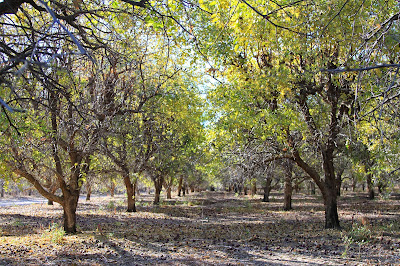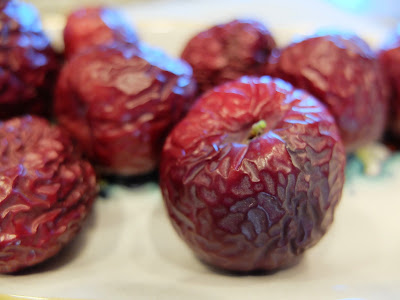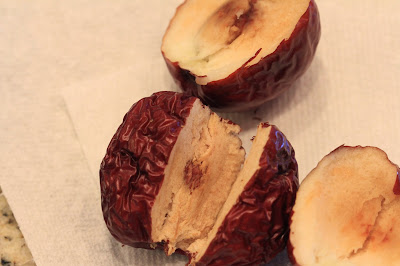It’s been four years since we visited Slab City. Back in 2010, we stopped to see Salvation Mountain. This time we were drawn deeper into the slabs to see the “tank farms”. We heard that the tanks were covered with murals and that was all we needed to know. As we made our way to the tanks, it was clear that there was a lot more to see. How did we miss East Jesus or the Slab City Library?
These tanks likely held water when the Slabs were Camp Dunlap from the 1940s to the 1950s. For more information about the history of the Slabs, see Slab City, Then and Now on the Slab City Website.
We photographed two tanks. The first tank (33.253277, -115.467664) is covered in murals of a political nature. In the images below, we call this Tank 1. The second tank (33.253010, -115.468961) has murals of an erotic nature and has the title Wheel of Kama, referring to the Kama Sutra. In the images below, we call this Tank 2.
The murals are slowly being covered with other art and graffiti. Compare the pictures we show here with how beautiful the murals were in 2012, as documented at L.A. Taco The Circular Murals of Slab City I and The Circular Murals of Slab City II. Curiously, at the bottom of the L.A. Taco post (Slab City I) is a comment that gives some information about who might have painted the murals.
Tank 1
Reptilian Brain Series
Named for the bird-like figure on the tank gate. Note the spent shotgun shells that make up part of the image.
Writing on the Tank Wall
Left: Boeing; Right GE, Freddie Mac, and Nike
Tank 2
Miscellaneous
Left: Erotic Yogis; Center: Curvature of the Tank and the Chocolate Mountains in the background; Right: Wheel of Kama Title
Tank 2 Against the Blue Sky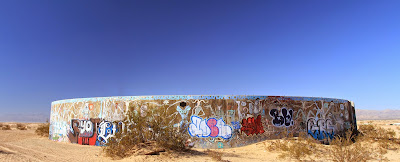












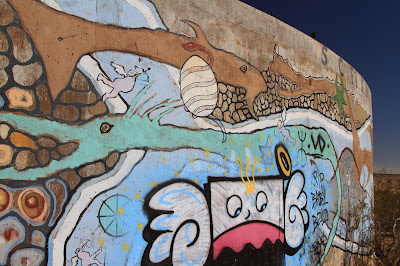


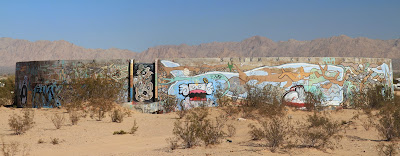




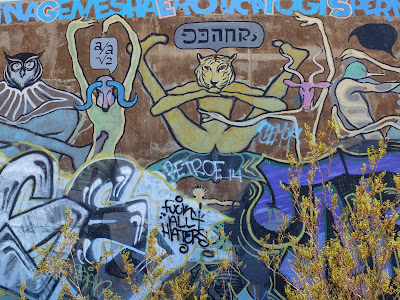























%2Bon%2Bthe%2Btree.JPG)
%2Bon%2Bthe%2Btree.JPG)
